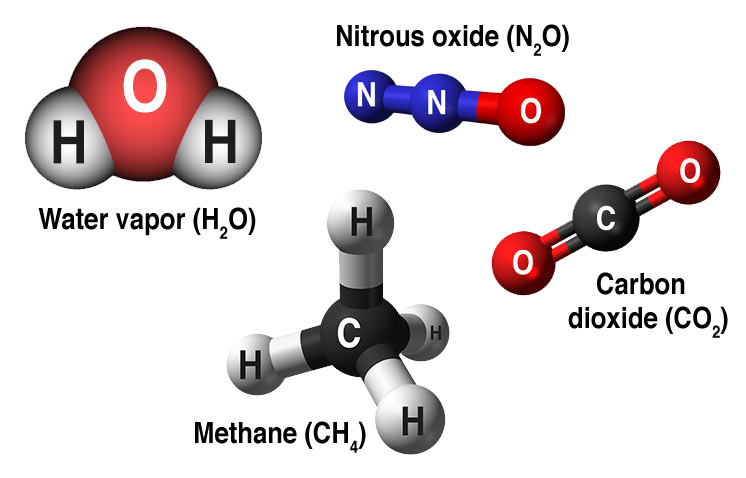What are the causes of climate change
Weather of Arabia - Since the mid-twentieth century, scientists have noticed that human activities are causing an increase in the greenhouse effect on the Earth, a natural phenomenon that results when the atmosphere traps the heat released by the Earth towards space, where certain gases in the atmosphere prevent heat from escaping to the outside.
So the global warming resulting from greenhouse gases is one of the most important causes of climate change, and there are gases that are described as having an effect that “incites” climate change, and they remain almost permanently in the atmosphere and do not respond physically or chemically to changes in temperature, and there are gases that respond physically Or chemically to changes in temperature, such as water vapor, they are seen as having a "reactive" effect on climate change.
Gases that contribute to global warming include:
1. Water vapor: It is the most abundant greenhouse gas in the atmosphere, but its effect is interactive with climate change, as water vapor increases with the temperature of the Earth’s atmosphere, as well as the possibility of clouds and precipitation increasing, which makes these some of the most important feedback mechanisms to the greenhouse effect.
2. Carbon Dioxide (CO2): Carbon dioxide (a minor but very important component of the atmosphere) is released through natural processes such as respiration and volcanic eruptions, and through human activities such as deforestation, changes in land use and burning of fossil fuels. Humans have increased the concentration of carbon dioxide in the atmosphere by 48 percent since the start of the industrial revolution, and this is the most important "trigger" of climate change.
3. Methane: It is a hydrocarbon gas that is produced through natural resources and human activities, including the decomposition of waste in landfills and agriculture, especially rice cultivation. It also results from the digestion processes in the bodies of ruminants and the management of manure resulting from the organic waste of domestic livestock. If we compare the molecular features between methane and carbon dioxide, we find that methane is a much more active greenhouse gas than carbon dioxide, but it is less abundant in the atmosphere.

(The difference in molecular structure between greenhouse gases: water vapor - carbon dioxide - methane - nitrous oxide)
4. Nitrous oxide: It is a powerful greenhouse gas produced by agricultural practices, particularly the use of commercial and organic fertilizers, fossil fuel combustion, nitric acid production, and biomass burning.
5. Chlorofluorocarbons (CFCs): These are man-made compounds that are used in many fields, but their production and release into the atmosphere are now determined by international agreement for their ability to contribute to the destruction of the ozone layer. It is also a greenhouse gas.
Arabia Weather App
Download the app to receive weather notifications and more..



